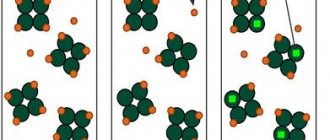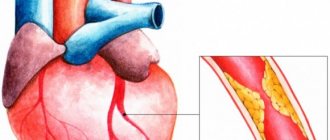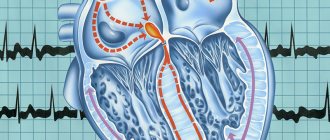- What is acidosis
- Reasons for development
- Types of acidosis
- Gas acidosis
- Non-gas acidosis
- Mixed acidosis
- Symptoms of acidosis
- Diagnosis of acidosis
- Treatment
Blood acidification is a very common phenomenon of our time.
This is due to the impact of harmful external factors of modern lifestyle and ecology. Violation of the acid-base balance in any direction, either acidification (Acidosis) or alkalization (Alkalosis), leads to a failure of vital systems. The acid-base state is assessed by the value of the hydrogen index (pH). From the point of view of physiology, the hydrogen indicators of the internal environments of the body, such as blood, intercellular fluid, are a rigid constant, because the slightest shifts disrupt the functioning of enzymes, and therefore lead to diseases, and with deviations of 0.5 in any direction, death is likely.
The normal range of blood pH is 7.35-7.45
What is Acidosis, what is the cause and how to deal with it?
Acidosis is a form of acid-base imbalance characterized by an absolute or relative excess of acids in the body.
Normally, the human body produces almost 20 times more acidic products than alkaline ones; therefore, systems that neutralize acidic compounds dominate in the body.
One of the reasons for a decrease in pH in the body is oxidative stress, the process of damage to cells and tissues by reactive oxygen species.
In the area of cell damage by reactive oxygen species, metabolic disturbances occur, inflammation develops, lactic, malic, succinic, a-ketoglutaric acids, under-oxidized products of lipolysis and proteolysis (fatty acids, polypeptides, amino acids, ketone bodies) accumulate.
The accumulation of acidic metabolites underlies the development of metabolic acidosis in the inflammatory zone. Moreover, the more intense the inflammation, the deeper the shifts in the acid-base state at the site of damage.
In the blood with acidosis, there is a decrease in pH below normal (below the average Ph value, taken as 7.39)
Principles of treatment
Correcting metabolic acidosis is quite a difficult task even for an experienced doctor. Each patient suspected of having this disease is asked to be hospitalized, as they need constant monitoring, regular intravenous infusions of solutions and periodic examinations.
All treatment goals can be divided into two groups - restoration of normal blood acidity and elimination of the cause of the pathology.
pH restoration
First of all, doctors are trying to find out what disease led to the development of the pathology. If it is diabetes, therapy to lower glucose levels with insulin and medications begins immediately. If a severe infection develops, complex treatment is carried out using antibacterial/antiviral drugs. If a decrease in pH has caused severe damage to an organ, the attending physician tries to restore its function or replace it with the help of medications and instrumental techniques (for example, hemodialysis).
Simultaneously with the measures listed above, infusion therapy is required - drip intravenous infusion of solutions. The choice of solution depends on the type:
| Form of pathology | Features of infusion therapy | Optimal solutions |
| Diabetic ketoacidosis | In patients with this condition, it is necessary to replenish the loss of fluid and beneficial microelements. However, solutions containing glucose are contraindicated for use. | Preparations containing electrolytes: potassium, sodium, calcium, magnesium, etc.
|
| Lactic acidosis | The main goal of therapy is to eliminate the lack of fluid, reduce the concentration of lactic acid and restore the deficiency of alkalis. | |
| Nondiabetic ketoacidosis | With this form, solutions with an anti-ketone effect are indicated. In addition, they must replenish the deficiency of glucose (if any) and fluid. | The optimal drug for therapy (in the absence of contraindications) is a 20-40% glucose solution. Additionally, it is possible to use the drugs Reosorbilact and Xylate, which effectively remove acetone and butyric acids from the blood. |
Infusion therapy in children is carried out according to the same principles as in adults. The main thing is to correctly determine the cause and variant of the disease. The only difference is the volume of intravenous infusions - the child requires significantly less fluids. Doctors calculate the required amount based on body weight.
Features of therapy for individual forms
Since each form has different pathological mechanisms, some aspects of their treatment differ from each other. In this section we present the most important principles that must be followed when prescribing therapy:
- For lactic acidosis, in addition to infusion therapy, B vitamins (thiamine, pyridoxine, cyanocobalamin) must be prescribed every 12 hours. These substances improve metabolism and help normalize acidity. To combat the lack of air, patients are given continuous oxygen inhalation through a mask or nasal prongs. In case of severe acidosis, when the level of lactic acid increases 4-5 times, doctors can “cleanse” the blood - hemodialysis;
- In case of ketoacidosis without diabetes, it is recommended to prescribe drugs that restore the functioning of the digestive system (Domperidone, Metoclopramide) as an addition to standard therapy. This will reduce fluid loss through vomiting and improve food digestion. Feeding must be done orally (using a gastric tube or frequent split feedings). It should be high in calories, high in carbohydrates and low in fat. Vitamin therapy is also indicated for patients;
- For diabetic ketoacidosis, the main treatment is insulin administration. Reducing sugar concentrations and sufficient intravenous infusions are the most effective methods of therapy. After these measures, in most cases, the pH is restored to normal values and the patient’s well-being improves.
Treatment of a child is carried out according to the same principles as therapy for an adult patient. However, it should be remembered that children are more susceptible to any disease, especially those accompanied by changes in acidity. Therefore, timely hospitalization and properly provided medical care are especially important for them.
Causes of acidosis
- Endogenous causes:
the most common and significant in clinical practice. In many life disorders, the functions of buffer systems and mechanisms for maintaining an optimal acid-base state for the body are disrupted - Exogenous causes:
associated with excessive intake of acidic substances into the body. For example, violation of the dosage of medications, the entry of toxic substances into the body. People who use synthetic diets (amino acids with acidic properties) often develop acidosis.
Forecast
The prospects for recovery depend on the nature of the disease.
Compensated forms regress on their own in 76% of cases. Physiological varieties do not require treatment; adaptive mechanisms cope on their own. For more complex forms of the process, forecasts are vague.
Survival rate for the subcompensated type is 55-60%. If the final phase is detected - 10-15% or less.
Negative prognostic signs are confusion, coma, poor response to treatment, pregnancy, late admission to the hospital, the onset of structural changes in the central nervous system. Myocardium.
Gas acidosis
It is characterized by a change in the content of carbon dioxide in the body, and as a result, an increase in the concentration of carbonic acid.
The main reason is a violation of alveolar ventilation of the lungs (during spasm or blockage of the airways) above the body's gas exchange needs for a certain time.
Characteristic manifestations are:
- Spasm of small bronchi and bronchioles, increased intracranial pressure
- Impairment of microcirculation and blood supply to tissues, which leads to the development of cell hypoxia, metabolic disorders and the formation of ATP (the body’s universal source of energy)
- Ion imbalance
Scientists have found that patients with chronic obstructive pulmonary disease are more likely to develop respiratory acidosis (COPD is known to develop due to oxidative stress, as free radicals cause damage to the alveoli)
Metabolic acidosis
The acid-base balance in the blood is a vital parameter. Its normal values range from 7.35 to 7.45 on the pH scale. If the pH drops below 7.35, the patient has acidosis. If it rises above 7.45, this means that the patient has alkalosis.
Alkalosis and acidosis are metabolic (metabolic) and respiratory (respiratory). It depends on the reasons for their development.
Respiratory acidosis develops when a lot of carbon dioxide accumulates in the blood, forming carbon dioxide when combined with water. Because of this, the acidity of the blood increases. This condition can develop with respiratory disorders that cause decreased pulmonary ventilation.
The disease can also develop due to lung disease (for example, bronchial asthma), damage to the nervous system (for example, brain injury), nerve and muscle diseases that lead to loss of the ability to make effective respiratory movements (amyotrophic lateral disease is one such disease). sclerosis).
The opposite condition is called respiratory alkalosis and occurs when the lungs begin to remove carbon dioxide from the body in excess. This occurs due to an increase in the rhythm of breathing and its depth.
Such a respiratory disorder can occur in the presence of pathology on the part of various systems and organs (for example, with lung diseases, tumors and brain injuries, cardiovascular failure).
Metabolic acidosis can develop for the following reasons:
- increasing the production of acids by the body. This can be observed in conditions that are accompanied by metabolic disorders: diabetes mellitus, when cells begin to suffer from impaired glucose use due to a lack of the hormone insulin. (The body produces energy not from glucose, but from fats - this path is an alternative. When fats are broken down in the liver, many ketone acids are formed, which provoke the appearance of acidosis).
- impaired renal function. The kidneys play an important role in the process of regulating the acid-base balance in the blood. If a patient has kidney diseases that can lead to disruption of their functions, the processes of absorption of substances with an alkaline reaction and the processes of acid secretion may also be disrupted. This may cause acidosis.
- loss of a large amount of alkalis along with digestive juices. This condition can be observed in the case of various operations on the intestines, with severe diarrhea.
- poisoning by toxic substances, poisons. These substances can be broken down in the body, producing excessive amounts of acids. This can cause acidosis.
The main causes of metabolic alkalosis are the following:
- use of diuretics (diuretics);
- loss of acidic gastric contents in large quantities: this occurs when aspiration of stomach contents through a special probe, with profuse vomiting;
- excessive excretion of hydrogen ions by the kidneys. This can occur when the body has an excess of aldosterone, an adrenal hormone that takes part in the regulation of water and electrolyte balance. Its level can increase both in diseases of the adrenal glands and in pathologies of other organs (for example, in heart failure).
That is, the development of alkalosis or acidosis is most often caused by the occurrence of pathological processes in the patient’s body, during which the acid-base balance changes, and the compensatory capabilities of the body are insufficient.
Symptoms
Very often, the symptoms of alkalosis and acidosis are masked by signs of the underlying disease, which provoked a change in the acid-base balance in the patient’s blood.
Symptoms of acidosis may include the following:
- rapid breathing;
- various disturbances of consciousness (up to coma);
- heart rhythm disturbances;
- headache;
- vomiting and nausea;
- decreased blood pressure (observed in severe forms).
With alkalosis, the following symptoms are observed:
- dizziness;
- heart rhythm disturbances;
- cramps in different muscle groups;
- headache;
- disturbances of consciousness (up to coma).
Non-gas acidosis.
The main causes are metabolic disorders resulting from the development of oxidative stress, directly related to the increased formation of free radicals and a decrease in the effectiveness of the antioxidant system.
The most characteristic manifestations of non-gas acidosis are: decreased blood flow in the brain, kidneys and myocardium, edema, increasing depression of the nervous system (this is manifested by drowsiness, lethargy, and in severe cases - coma, for example in patients with diabetes mellitus)
Non-gas acid-base disorders (ABS) are, in turn, divided into three types: metabolic, excretory and exogenous.
Symptoms of body acidification
Depending on the degree of acidification of the blood and tissues, symptoms may intensify. With a mild degree, it is difficult to establish an accurate diagnosis without tests in Yeisk, since there may be no symptoms.
The main symptoms of high acidity are:
- Nausea, periodic vomiting.
- Increase or decrease in blood pressure.
- Cardiac arrhythmias, rhythm disturbances, shortness of breath.
- Central nervous system disorders (dizziness, disturbances of consciousness, fainting, drowsiness, lethargy, inability to concentrate).
- Appetite disorders.
- Pain in muscles, joints.
- Brittle bones, hair.
Excretory acidosis
The main reason is the loss of bases (alkalies) by the body as a result of certain pathologies.
For example, with renal failure, hypoxia of kidney tissue or nephritis, a renal type of excretory acidosis develops. With an open wound of the intestine and diarrhea, intestinal excretory acidosis develops.
Inflammation in a particular organ and oxidative stress are cyclical processes, because an increase in inflammatory mediators and the circulation of immune system cells provokes an increasing formation of ROS by activating enzymes that generate radicals.
How to prevent acidosis?
What this is, everyone, even a healthy person, needs to know. Indeed, very often women’s passion for dieting and fasting leads to acidosis. And in children it can appear due to poor nutrition, for example, a passion for baking, fast food and a lack of fresh vegetables and fruits in the diet.
Acidosis can also appear due to prolonged physical exertion or oxygen deprivation. Therefore, in order for a healthy person to prevent this condition, you need to monitor your diet, walk more in the fresh air and give up bad habits. The diet should be dominated by raw plant foods. You need to give up sausages, animal fats, confectionery and canned foods. It is necessary to drink as much fresh water as possible. And to quickly relieve the symptoms of acid poisoning, you can drink a soda solution.
A very dangerous condition that can lead to death is acidosis. What is this you need to know in order to avoid severe damage to organs and tissues.
Mixed acidosis.
The same patient may exhibit signs of both gas and non-gas acidosis.
Examples of conditions in which mixed (combined) acidosis can develop: heart failure, brain injury, chronic broncho-obstructive pulmonary diseases, chronic gastroenteritis.
In any chronic disease, as a result of a constant, ongoing inflammatory process, the accumulation of markers of oxidative stress and the action of reactive oxygen species on tissue, blood acidification is observed.
Reasons for development
- Diabetes mellitus type 2;
- Cumulation of metformin components;
- Muscle hypoxia, as a common phenomenon of physical activity;
- Cardiovascular diseases are caused by heart pathology, which provokes insufficient blood circulation;
- Reanimation conditions;
- Oncological diseases: cancer cells produce lactic acid, which accumulates during weight loss with progressive disease;
- Intoxication due to alcoholism;
- Sepsis caused by any type of viral or bacterial infection;
- HIV medications – nucleoside reverse transcriptase inhibitors (NRTIs);
- Short bowel syndrome causes lactic acidosis due to the growth of bacteria in the small intestine.
Other causes include life-threatening conditions such as shock, pulmonary embolism and major operations in which the tissue is insufficiently supplied with blood and, as a result, oxygen. In such conditions, the body is forced to resort to energy production through the formation of lactate.
Due to high blood sugar levels, diabetics develop a deficiency of water and electrolytes in the body, which leads to a reduction in blood volume. So-called hypovolemic shock occurs.
Deficiency of thiamine (vitamin B1) due to Beriberi syndrome, which often develops due to poor nutrition and alcoholism, can also lead to lactic acidosis. In this case, pyruvate accumulates, the end product of glucose metabolism, which can be converted into lactate.
Lactic acidosis also occurs in extreme athletes. During intense training, the body uses anaerobic energy production (without oxygen), which results in the release of lactic acid, which causes muscle pain. This is a physiological and usually harmless process; with constant overload, it can lead to lactic acidosis. In this case, it is usually enough for the athlete to take breaks between physical exercises and adjust the load on the body.
Symptoms of acidosis
Symptoms of acidosis are sometimes difficult to distinguish from other pathological conditions.
The main symptoms of acidosis are:
- Short-term nausea, vomiting;
- General malaise;
- Increased heart rate
- Dyspnea;
- Cardiac arrhythmias;
- Increased blood pressure;
- Disorder of the functions of the central nervous system (drowsiness, confusion, dizziness, loss of consciousness, lethargy);
- Shock states
Symptoms
There are some common clinical points. There are also specific individual manifestations of the types of disorders described above.
If we talk about signs that are always present:
- Dizziness. It occurs suddenly, in attacks. Against the background of the norm, an episode begins, the person ceases to navigate in space. The world is spinning around before your eyes, it is impossible to move normally and coordinate your own actions. You have to take a lying position. The symptom is constantly present until the health condition is corrected and blood acidity is restored.
- Confusion. Decreased speed of thinking, decreased productivity, forgetfulness. To the point that a person does not remember basic things. It is impossible to formulate thoughts, to speak out. This is the result of a malfunction of the brain.
It is necessary to begin treatment as quickly as possible. Because otherwise, due to hypoxia (insufficient cellular respiration), the fibers will begin to die. And this is a guarantee of irreversible neurological disorders.
- Sensory disturbances. Paresis. Incomplete deviations in motor ability as another sign.
- Paresthesia. Feeling of goosebumps running through the body. This disorder is especially typical for non-gas alkalosis, with a long-term existence of the process.
- Tachycardia. Increasing heart rate to 100 beats per minute and above. Exists on an ongoing basis until the cause of the violation is eliminated. In the initial phase, there are no critical changes in the anatomy of the myocardium, but if you delay with help, cardiac ischemia will inevitably develop, and this is deadly.
- Dyspnea. With formal preservation of the lungs in normal condition. We are talking about the body's attempt to compensate for the changes. But the results are minimal, so the intensity of the symptom continues to grow.
- Weakness, increased fatigue. Inability to perform even simple everyday activities. As a rule, the patient sits or lies down and moves little. Cannot tolerate even minimal activity.
- Fainting. Loss of consciousness. Syncope is relatively common. As the disorder progresses, it becomes more profound and obvious. A transition to a coma is possible.
- Anxiety. Increased psychomotor agitation.
The respiratory form of alkalosis is accompanied by additional symptoms:
- Acceleration of breathing. Expressed.
- Paleness of the skin. Cyanosis and blue discoloration of the nasolabial triangle are also possible.
Metabolic type:
- Swelling of the limbs, face.
- Instability of blood pressure levels.
- With decompensation - hypertonicity of skeletal muscles.
As a rule, this variety is less likely to cause any symptoms. But you still need to monitor the patient.
Other forms:
- Frequent urination.
- Nausea, vomiting.
Acidosis and alkalosis are fundamentally different conditions. The first is acidification of the blood, and the second, on the contrary, alkalization. However, they have similar signs, so only a doctor can distinguish one from the other. If a clinic develops that even remotely resembles one or another abnormality, you need to call an ambulance.
Oxidative stress is a precursor to acidosis.
As is known, free radicals can damage almost all cell structures: membrane proteins and lipids, DNA, thereby disrupting the vital functions of cells.
The accumulation of under-oxidized products in the cell leads to a disruption of the redox potential of cell membranes, which complicates the supply of substances necessary for functioning, as well as the removal of decay products.
As a result, the cytoplasm of the cells becomes acidified and intracellular metabolic acidosis develops.
Causes
Factors in the development of the disease are diverse. If we summarize the list, we can talk about such culprits.
Increase in temperature. Accompanied by increased metabolism, breakdown of proteins and organic compounds. The body begins to intensify its own work. Products remain in the blood and acidify the environment. If the activity of buffer systems is disrupted, an increase in the thermometer reading even by a degree becomes extremely dangerous.
Endocrine diseases. First of all, diabetes mellitus. Accompanied by instability of insulin levels or tissue insensitivity to this substance. Which ultimately, through a complex process, leads to the production of lactic acid, poisoning of the body and coma. In addition to diabetes itself, other processes are possible: thyrotoxicosis, thyroid disease. Renal failure and other pathologies of the urinary tract. The problem is a violation of the elimination of breakdown products of proteins and carbohydrates. If this condition persists for a long time, acidosis and dangerous consequences cannot be avoided.
Therefore, nephrology patients need to carefully monitor their diet, select medications with caution, and regularly see a specialist. Lung dysfunction. Accompanied by insufficient intensity of gas exchange and, as a result, slow removal of carbon dioxide
It accumulates in the blood and causes an increase in its acidity. Direct causes include pneumonia, bronchitis, emphysema, COPD, and other conditions. Nutritional errors. Excessive consumption of protein foods may lower the pH level. Pregnancy. It is not so common as a factor in critical acidosis. Mainly for complications of gestation, multiple births, and diseases in the mother.
The cause of the disorder can be severe dehydration. With prolonged exposure to high temperatures, with diarrhea.
Diagnosis of acidosis
The following research methods are used to diagnose acidosis:
- Analysis of blood gas composition (for analysis, arterial blood is taken; analysis of venous blood will not accurately determine the pH level);
- Urine pH level analysis; Arterial blood analysis for serum electrolytes.
- Blood tests for basic metabolic parameters (blood gas composition) show not only the presence of acidosis, but also determine the type of acidosis (respiratory, metabolic).
Diagnostics
The diagnosis of lactic acidosis is established only after laboratory confirmation. The characteristic content of lactic acid is 2 mmol/l and above, normally 0.4-1.4 mmol/l. Due to the complexity of the symptoms and the rapid deterioration of the condition, studies are carried out in the intensive care unit.
| Sign | Diabetic ketoacidosis | Hyperglycemic state | Lactic acidosis |
| Smell of acetone | Yes | No | No |
| Acetone in urine | Yes | No | No |
| Pupils | Narrowed | Norm | Norm |
| Glycemia | Hyperglycemia | Sharply expressed | Small |
| Body temperature | Demoted | Normal/often elevated | Normal |
| General blood analysis | Leukocytosis, increased ESR | Blood thickening and ESR | Leukocytosis, ESR increased |
| General urine analysis | Proteinuria, cylindruria and microhematuria | Proteinuria, cylindruria | Ordinary |
| Blood potassium content | Reduced | Reduced | Norm or excess |
Treatment of acid-base imbalance
To treat acidosis, it is necessary to determine what type of acidosis and set a goal to reduce the symptoms of this type. It is necessary to influence the root cause of acidosis, and not just alkalize the body with alkaline products, because alkalizing the body will only bring short-term benefits and will lead to acidosis again.
Respiratory acidosis
The main goal: to reduce the degree of respiratory failure in the first place, as well as symptomatic treatment aimed at eliminating unpleasant sensations: headache, overexcitement, severe cardiac dysfunction.
Non-gas acidosis
The main goal: eliminate excess acids from the body, restore the normal content of bicarbonates.
The first step is to eliminate the disease or pathological condition (for example, oxidative stress that causes inflammation) that causes acidosis.
Symptomatic treatment is aimed at eliminating heart rhythm disorders, gastrointestinal tract functions, and disorders of neuromuscular tone.
Treatment
A prerequisite is the elimination of the primary cause of alkalosis. It all depends on the specific provoking factor.
- Vomiting requires the prescription of specific drugs. Metoclopramide, Cerucal.
- Sorbents for intense diarrhea. Be it activated carbon or other medications specifically designed for this purpose.
- Neurotic manifestations with uncontrolled hyperventilation require elimination with the help of sedatives (Diazepam). In complex clinical cases, if the patient is in a psychotic state, the use of antipsychotics will be required. However, this is a relatively rare situation.
As for eliminating the symptoms themselves, other medications are used.
- It is possible to use gentle potassium-sparing diuretics: Veroshpiron, Spironolactone and the like. This group of drugs is described in detail here.
- As a measure for the treatment of alkalosis, Darrow's solution and electrolytic salt mixtures are used.
In the first days after recovery from an acute condition, it is necessary to follow a gentle diet. You need to take as little acid-containing foods as possible.
This includes, for example, fermented milk components, fresh fruits, and vegetables. As support, it is possible to prescribe vitamin-mineral complexes and ascorbic acid.
Treatment of alkalosis in the early stages is carried out in intensive care conditions. After 1-2 days, the person, with a successful course and good dynamics, is sent to the general ward. He should remain under supervision for several more days.
Prevention
Pathological processes can be prevented if you lead a healthy lifestyle and prevent those situations in which disruption of internal processes occurs. You can significantly reduce the likelihood of acidosis:
- when drinking the daily amount of water (about 2 liters);
- control over the quality of drinking water, in particular, the level of hardness (mineral saturation);
- sufficient physical activity to promote ventilation of the lungs and increase blood circulation;
- balanced diet.
Prevention of diabetic ketoacidosis
Nothing super complicated or supernatural is required from you. You just need to be more careful about yourself and your health:
- measure your sugar more often and try to keep it within your target
- check ketones with visual test strips a couple of times a week
- Eat carbohydrates with every meal (if you have type 2, ask your doctor YOUR carbohydrate allowance per meal)
- improve your insulin injection and infusion technique
- do not overuse infusion sets
- When changing your infusion set, check your blood sugar 2-3 hours after installation to make sure insulin is reaching your body.
- do not change your infusion before bed
- minimize errors in calculating carbohydrates and dosages
- Do not skip insulin injections or take glucose-lowering medications!
Let us remember that ketoacidosis is a potentially dangerous, life-threatening condition.
Take care of yourself, Your DiaMarka!
Types of acidosis
Acidosis has several varieties, which arise depending on the effects of various substances on the body or due to improper functioning of internal organs. So we can distinguish three varieties of it based on pH:
1) Compensated. When the pH values beyond the lower limit of normal 7.35,
2) Subcompensated. Indicators drop to 7.25
3) Decompensated. Below 7.24 (life-threatening condition).
Depending on the reasons that caused acidification of the body, there are:
- Gas acidosis
- Non-gas
- Metabolic.
- Excretory (excretory).
- Exogenous.
- Mixed option










